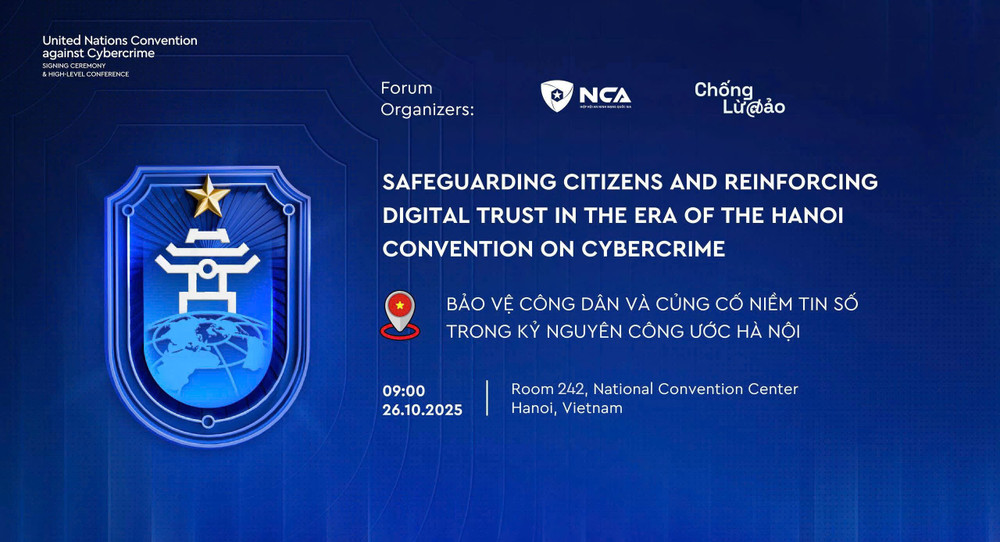Welcome to GrabIND NEWS. Here you will get to know all the latest details regarding the Vietnam’s strong commitment to shaping global digital framework.
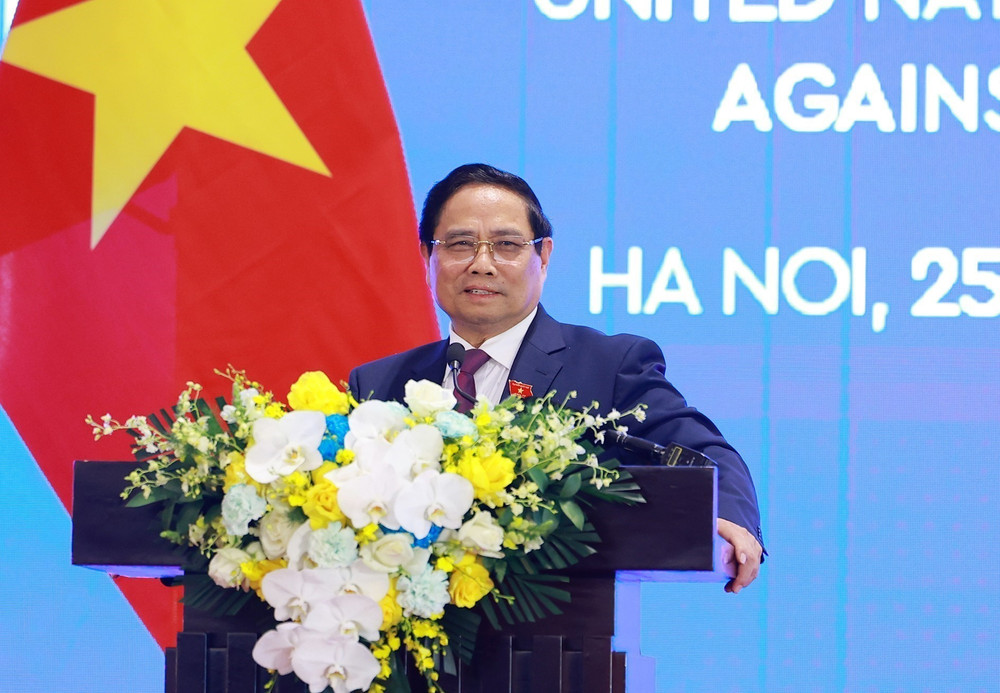
>>>To Read our Products Reviews CLICK HERE<<<
The digital world is at a crossroads. While digitalization promises unprecedented prosperity and connectivity, it is shadowed by a relentless wave of transnational cybercrime, projected to inflict a staggering $10.5 trillion in losses globally by 2025. This challenge is borderless, sophisticated, and demands a unified global response.
Against this backdrop, the opening for signature of the United Nations Convention against Cybercrime, officially dubbed the Hanoi Convention, in Vietnam’s capital on October 25, 2025, marks a genuine watershed moment. This isn’t merely a procedural event; it is a clear signal of Vietnam’s strong commitment to multilateralism and its ambition to lead the conversation on global digital governance. By hosting the signing ceremony, Vietnam solidifies its rising diplomatic stature and directly influences the architecture of a safer, more equitable global digital framework.
The Dawn of Global Digital Law
The Hanoi Convention is historic. After five years of negotiation, it stands as the world’s first comprehensive, legally binding global treaty dedicated to combating cybercrime. Comprising nine chapters and 71 articles, it provides the long-awaited common legal ground necessary to accelerate international cooperation in investigating, prosecuting, and preventing online offenses.
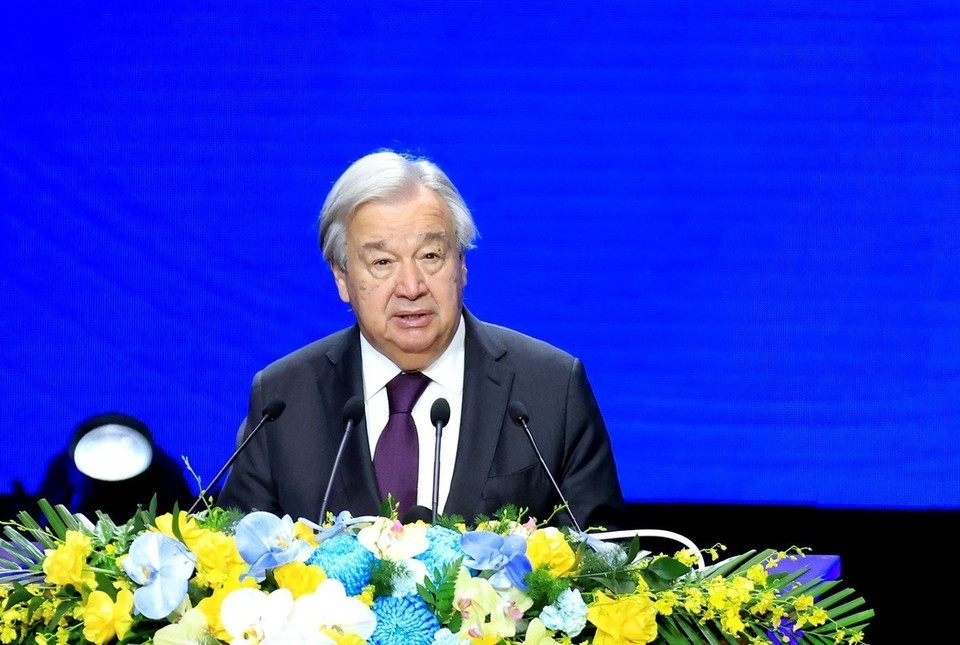
For two decades, the absence of a universal legal framework meant criminals could exploit national jurisdictional gaps with impunity. This new convention bridges the divide between developed and developing nations, promoting dialogue based on equality and shared benefit. It moves beyond ad-hoc cooperation to establish concrete legal obligations, ensuring that goodwill commitments are translated into practical safeguards.
The Convention’s core mandate is to standardize the definition and approach to a vast spectrum of cybercrimes, including:
- Illegal access to ICT systems.
- System interference and data theft.
- Financial fraud and ransomware extortion.
- Illicit data trafficking.
- Laundering of proceeds from cybercrime.
By harmonizing the classification of these offenses, the treaty provides a shared playbook for law enforcement agencies worldwide, finally allowing states to collectively chase criminals who have long known no borders.
A Convention Built for the 21st Century
A significant breakthrough of the Hanoi Convention lies in its forward-looking nature, designed to address threats that barely existed when the last major anti-crime treaty was drafted two decades ago.
1. Codifying Virtual Asset Crimes:
A primary challenge in modern cyber investigations is tracing and seizing assets derived from crimes like ransomware attacks. These payments are often made using cryptocurrencies (virtual assets). The Hanoi Convention specifically includes virtual assets in its definition of property and criminal proceeds. This crucial, modern provision equips law enforcement to trace, seize, and address the legal ambiguity surrounding digital currencies in criminal activity, a step critical to dismantling transnational cyber rings.
>>>To Read our Products Reviews CLICK HERE<<<
2. Protecting Vulnerable Groups Online:
The Convention places human rights and victim protection at its core, a testament to multilateral efforts to build a humane cyberspace. For the first time in an international treaty of this kind, the non-consensual dissemination of intimate images is recognized as a criminal offense. This commitment is a victory for victims of online abuse and provides strong provisions for their recovery, compensation, and the removal of illicit content, ensuring that fundamental rights like privacy and dignity are safeguarded both offline and online.
The treaty also mandates practical mechanisms to enable real-time collaboration:
- 24/7 Contact Points: Each signatory country must designate a round-the-clock contact point for urgent cybercrime investigations, ensuring that digital evidence—which is highly volatile—can be preserved and shared across borders without delay.
- Electronic Evidence Transfer: It provides a clear pathway for investigators and prosecutors to overcome the major obstacle of sharing digital evidence when perpetrators, victims, and data are located in different countries.
Vietnam’s Diplomatic Blueprint for a Secure Cyberspace
Vietnam’s successful bid to host the signing ceremony confirms its emergence as a major player in global digital diplomacy. This is not simply a matter of prestige; it reflects the nation’s proactive effort to shape global digital governance norms.
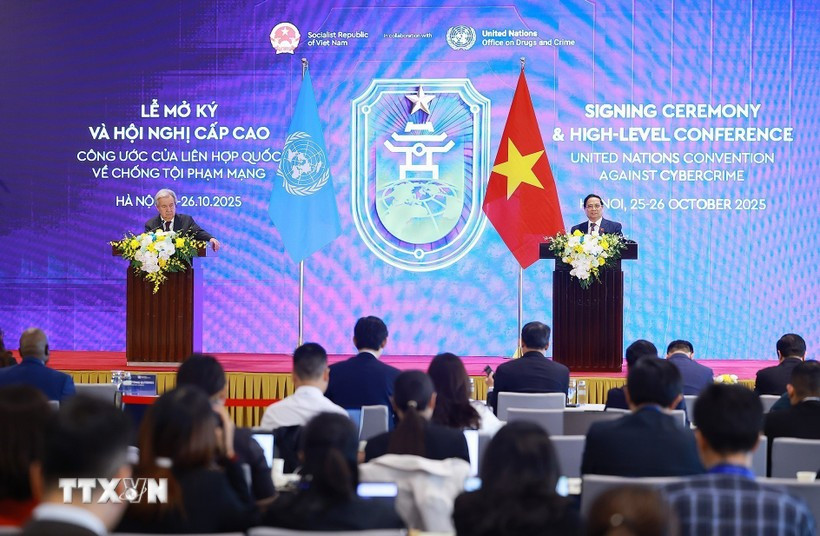
Vietnam’s diplomatic skill was instrumental during the convention’s drafting process. The country actively advocated for key principles, including upholding national sovereignty, independence, and non-interference, ensuring the resulting framework respects the common interests of all nations, especially those in the developing world. The country’s own robust domestic cybersecurity framework supports this global push.
Furthermore, Vietnam’s internal digital transformation ambitions, outlined in its National Digital Transformation Program (2025-2030), directly align with the spirit of the Hanoi Convention. Vietnam views a secure digital environment as foundational to its economic goals:
| Strategy & Targets | Goal by 2030 |
| Digital Economy | Account for at least 30% of GDP. |
| Connectivity | Universalize 5G mobile services (99% population coverage). |
| Security & Innovation | Be ranked among the top 30 countries in the Global Innovation Index (GII) and achieve Tier 1 in Global Cybersecurity Index (GCI). |
This strategic focus demonstrates that Vietnam is not just facilitating a global standard, but fully integrating it into its national future. By aligning its domestic laws, such as the 2018 Cybersecurity Law, with international standards, Vietnam is poised to translate its diplomatic leadership into practical impact for its citizens and the broader ASEAN region.
The Road from Signature to Safeguard
The Hanoi Convention is a powerful, legally binding instrument that represents a massive victory for multilateralism. As UN Secretary-General António Guterres noted at the signing, its true power lies in “turning signatures into tangible action.”
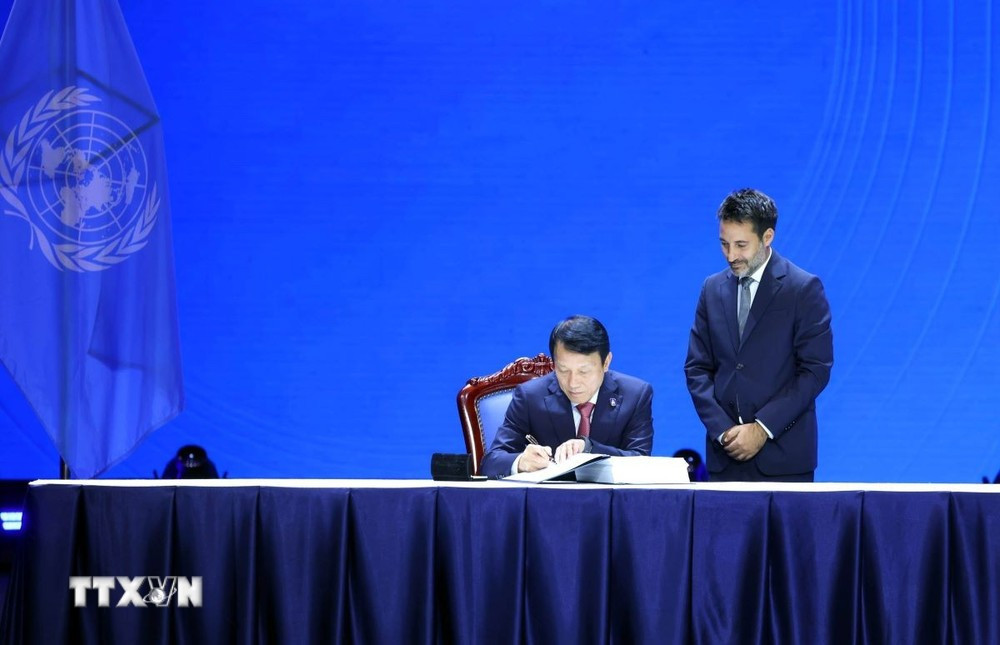
The treaty will officially enter into force ninety days after the fortieth nation deposits its instrument of ratification. This transition requires commitment from participating States to strengthen domestic legislation, build judicial and technical capacity, and foster public awareness. For countries worldwide, and particularly for the nations that depend on secure cross-border data flows, the Hanoi Convention provides the collective security necessary to foster trust in the burgeoning digital economy.
The age of unchecked cybercrime is drawing to a close. With the Hanoi Convention, driven by Vietnam’s leadership, the global community now has a clear, shared path toward a safer, more resilient digital future.
External References & Resources:
- United Nations Office on Drugs and Crime (UNODC) on the Cybercrime Convention: UNODC Convention Details
- Read complete news: Vietnam+
- Data on Global Cybercrime Costs: Cybersecurity Ventures Report






